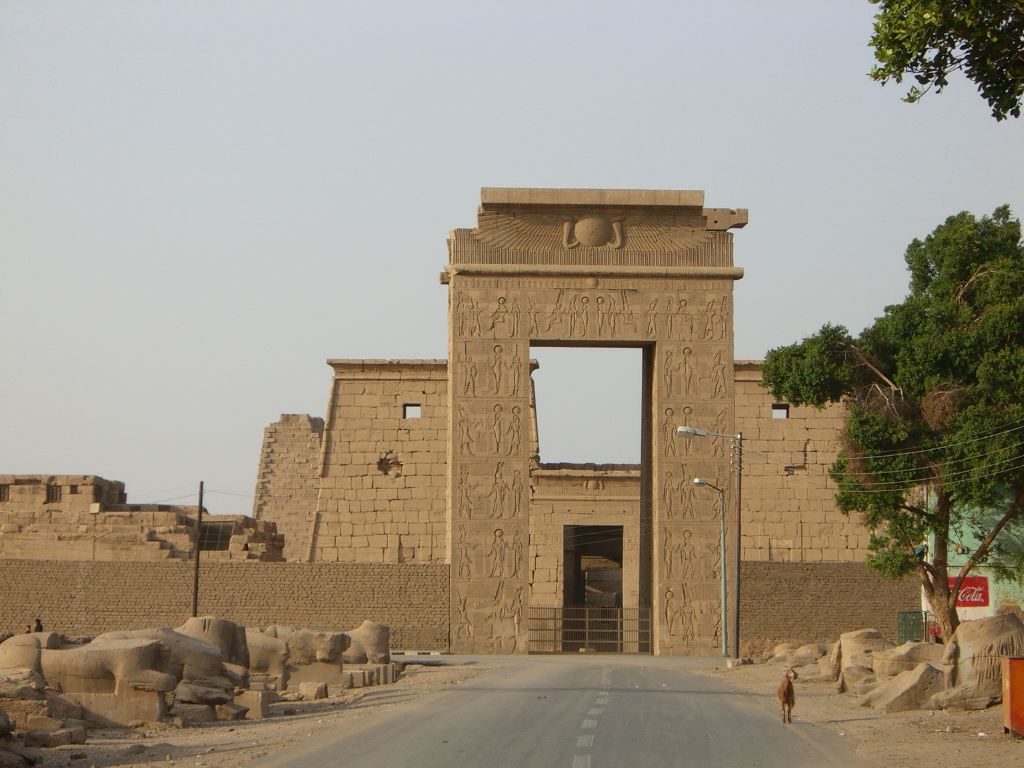Temple Of Khonsu on:
[Wikipedia]
[Google]
[Amazon]
 The Temple of
The Temple of
File:Karnak Khonsou 080508.jpg
File:Karnak Khonsou 080507.jpg
File:Karnak Khonsou 080502.jpg
File:Karnak Khonsou 0805121.jpg
File:Karnak Khonsou 080514.jpg
File:Karnak Khonsou 080520.jpg
File:Karnak Khonsou 080522.jpg
File:Karnak Khonsou 080528.jpg
File:KhonsuTemple-Karnak-Khonsu.jpg
 The Temple of
The Temple of Khonsu
Khonsu ( egy, ḫnsw; also transliterated Chonsu, Khensu, Khons, Chons or Khonshu; cop, Ϣⲟⲛⲥ, Shons) is the ancient Egyptian god of the Moon. His name means "traveller", and this may relate to the perceived nightly travel of the Moon ...
is an ancient Egyptian temple
Egyptian temples were built for the official worship of the gods and in commemoration of the pharaohs in ancient Egypt and regions under Egyptian control. Temples were seen as houses for the gods or kings to whom they were dedicated. Within the ...
. It is located within the large Precinct of Amun-Re
The Precinct of Amun-Re, located near Luxor, Egypt, is one of the four main temple enclosures that make up the immense Karnak Temple Complex. The precinct is by far the largest of these and the only one that is open to the general public. The te ...
at Karnak
The Karnak Temple Complex, commonly known as Karnak (, which was originally derived from ar, خورنق ''Khurnaq'' "fortified village"), comprises a vast mix of decayed temples, pylons, chapels, and other buildings near Luxor, Egypt. Constr ...
, in Luxor
Luxor ( ar, الأقصر, al-ʾuqṣur, lit=the palaces) is a modern city in Upper (southern) Egypt which includes the site of the Ancient Egyptian city of ''Thebes''.
Luxor has frequently been characterized as the "world's greatest open-a ...
, Egypt
Egypt ( ar, مصر , ), officially the Arab Republic of Egypt, is a transcontinental country spanning the northeast corner of Africa and southwest corner of Asia via a land bridge formed by the Sinai Peninsula. It is bordered by the Mediter ...
. The edifice is an example of an almost complete New Kingdom temple
A temple (from the Latin ) is a building reserved for spiritual rituals and activities such as prayer and sacrifice. Religions which erect temples include Christianity (whose temples are typically called churches), Hinduism (whose temples ...
, and was originally constructed by Ramesses III
Usermaatre Meryamun Ramesses III (also written Ramses and Rameses) was the second Pharaoh of the Twentieth Dynasty in Ancient Egypt. He is thought to have reigned from 26 March 1186 to 15 April 1155 BC and is considered to be the last great monar ...
on the site of an earlier temple. The gateway of this temple is at the end of the avenue of sphinx
A sphinx ( , grc, σφίγξ , Boeotian: , plural sphinxes or sphinges) is a mythical creature with the head of a human, the body of a lion, and the wings of a falcon.
In Greek tradition, the sphinx has the head of a woman, the haunches of ...
es that ran to the Luxor Temple
The Luxor Temple ( ar, معبد الأقصر) is a large Ancient Egyptian temple complex located on the east bank of the Nile River in the city today known as Luxor (ancient Thebes) and was constructed approximately 1400 BCE. In the Egyptian lang ...
. In Ptolemaic Ptolemaic is the adjective formed from the name Ptolemy, and may refer to:
Pertaining to the Ptolemaic dynasty
* Ptolemaic dynasty, the Macedonian Greek dynasty that ruled Egypt founded in 305 BC by Ptolemy I Soter
* Ptolemaic Kingdom
Pertaining ...
times, Ptolemy III Euergetes
, predecessor = Ptolemy II
, successor = Ptolemy IV
, nebty = ''ḳn nḏtj-nṯrw jnb-mnḫ-n-tꜢmrj'Qen nedjtinetjeru inebmenekhentamery''The brave one who has protected the gods, a potent wall for The Beloved Land
, nebty_hiero ...
constructed a great gateway and enclosure wall for the temple; only the gateway now remains (see below). Inscriptions inside the forecourt of the temple were made in the time of Herihor
Herihor was an Egyptian army officer and High Priest of Amun at Thebes (1080 BC to 1074 BC) during the reign of Pharaoh Ramesses XI.
Chronological and genealogical position
Traditionally his career was placed before that of the High Priest of ...
.
The hypostyle hall was erected by Nectanebo I
Nectanebo I ( Egyptian: ; grc-gre, Νεκτάνεβις ; died 361/60 BCE) was an ancient Egyptian pharaoh, founder of the last native dynasty of Egypt, the 30th.
Name
Nectanebo's Egyptian personal name was Nḫt-nb.f, which means "the stron ...
and is not of great size; inside were found two baboons that appear to have been carved in the time of Seti I
Menmaatre Seti I (or Sethos I in Greek) was the second pharaoh of the Nineteenth Dynasty of Egypt during the New Kingdom period, ruling c.1294 or 1290 BC to 1279 BC. He was the son of Ramesses I and Sitre, and the father of Ramesses II.
The ...
. It probably belonged to the earlier building on the site.
Numerous blocks with unmatching and inverted decorations can be seen, showing the amount of reconstruction and reuse of material from the surrounding temple complexes, especially in Ptolemaic Ptolemaic is the adjective formed from the name Ptolemy, and may refer to:
Pertaining to the Ptolemaic dynasty
* Ptolemaic dynasty, the Macedonian Greek dynasty that ruled Egypt founded in 305 BC by Ptolemy I Soter
* Ptolemaic Kingdom
Pertaining ...
times.
From 2006 to 2018, the American Research Center in Egypt performed conservation work.
Bibliography
* The Epigraphic Survey, The Temple of Khonsu, volume 1, Chicago 1978, Oriental Institute Publications, volume 100 * The Epigraphic Survey, The Temple of Khonsu, volume 2, Chicago 1981, Oriental Institute Publications, volume 103 * Ad Thijs, The scenes of the High Priest Pinuzem in the Temple of Khonsu, Zeitschrift für Ägyptische Sprache 134 (2007), 50-63Gallery of images
References